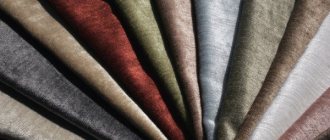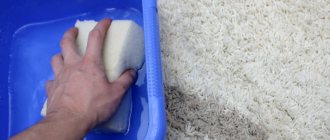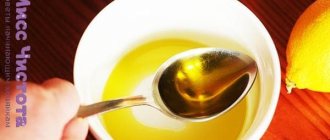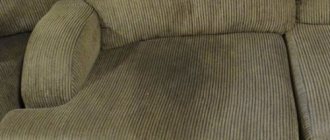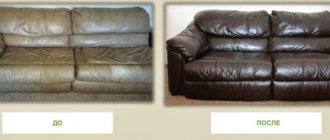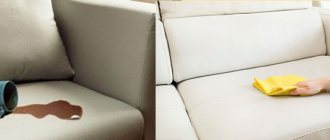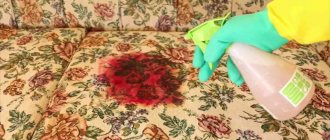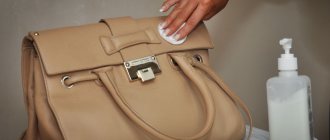Why is laundry treated with starch solution?
Clothes and linen are starched to achieve the following purposes:
- increased density, thereby increasing resistance to wear;
- the fabric acquires moisture- and dirt-repellent properties, so you will have to wash things less often;
- giving a rigid shape;
- the treated fabric wrinkles less when worn;
- bleaching, white things look snow-white after the procedure.
Sometimes thin fabrics are treated with a starch solution before cutting, this allows for maximum cutting accuracy.
But this processing method also has negative sides. Starched items are less breathable and absorb moisture.
What things should not be starched?
The following things should not be starched:
- Underwear. Reduced breathability and ability to absorb moisture reduces the hygienic properties of linen. And it can even cause the development of fungal and bacterial infections.
- Sports and summer clothes. These items are not treated with starch solution for the same reasons as underwear.
- Synthetic items. Synthetic fibers do not change their properties when processing starch, that is, the procedure will be useless.
- Items decorated with embroidery. Embroidery threads may stick together when exposed to starch solution.
Basic Rules
Starching fabric at home is not difficult, let’s figure out how to do it correctly.
Basic Rules:
- Only clean clothes can be processed; as a rule, they are starched immediately after washing;
- for processing it is better to use corn starch, but you can also use potato starch;
- Depending on the type of fabric and the tasks at hand, the concentration of the starch solution is selected. There are three options - weak, medium, concentrated.
The procedure can be carried out either manually or in an automatic machine. When working manually, you need to make a solution and immerse the item completely in it for a short time. Then the item is removed, gently wrung out, straightened and dried.
If you plan to carry out the procedure in a car, then the prepared starch solution must be poured into the compartment intended for the air conditioner. After completing the cycle, be sure to rinse the tray to remove any remaining starch.
You can cook not only the whole thing, but also its individual parts. For example, for men's shirts, only the collar and cuffs can be starched. This can only be done manually.
How to starch different things
The concentration of the starch solution is chosen depending on the type of item. For example, a soft solution is used for a shirt, but for a petticoat, which must hold its shape rigidly, a solution of higher concentration should be prepared.
Skirt, blouse, dress
To starch a skirt, dress or blouse, prepare a soft solution. The purpose of processing is that the fabric should thicken a little, but not become stiff and not stand up.
Procedure:
- inspect the item, if there are stains, remove, wash;
- boil 2 liters of water;
- dilute 1 full tablespoon of starch in a cup of cold water;
- pour the prepared suspension into boiling water, stir;
- pour the solution into a suitable container, let it cool to a warm state;
- put a blouse or skirt in the solution for 5 minutes;
- gently squeeze, straighten and dry, hanging on hangers;
- air dry in the shade or indoors.
After this treatment, you need to iron your skirt or blouse through a layer of gauze.
Petticoats
A petticoat is worn to add fullness to flared skirts. It is important to ensure that this toilet part holds its shape well. To do this, prepare a medium-hard starch solution.
To prepare the solution, take 2 liters of water and 2 tablespoons of starch. They act in exactly the same way as when treating a skirt with starch solution.
Medical cap
The medical cap must hold its shape well, so a hard starch solution is used. The same solution is used to treat collars and cuffs of men's shirts.
To prepare a hard solution, use 4 tablespoons of starch per 2 liters of water. Immerse the medical cap in the concentrated solution for no more than 2-3 minutes.
To obtain special hardness, borax is added to the starch when preparing the solution. Proportions:
- 2 liters of water;
- 100 g starch;
- 2 teaspoons borax.
The product is prepared as follows: stir starch in a glass of cold water. Stir borax in the same amount of hot water. Boil the remaining water, pour the starch solution into it while stirring constantly. Remove from heat and pour in the borax solution, stir. Let the solution stand for 2 hours. Warm until slightly warm before use.
Bed sheets
To starch bed linen, you can prepare a solution with a mild or medium concentration. The last option is chosen if you want the laundry to “crunch”. It is more convenient to starch such bulky items in the washing machine.
Alternative Methods
To give the product a rigid shape, it is not necessary to use starch. This product can be replaced with gelatin, sugar and even glue. For example, a material such as satin can acquire a characteristic yellowish tint when exposed to starch. Therefore, only gelatin is used to give the required shape to this fabric.
Sugar
Components:
- sugar - 100 g;
- water - 200 ml.
Progress of the procedure
- Initially, the syrup is boiled by dissolving sugar in water.
- The liquid just needs to be brought to a boil and immediately removed from the heat. Watch carefully to ensure that the syrup does not turn yellow. Otherwise it will become unusable.
- This method can be used to starch knitted boots and panama hats.
Gelatin
Components:
- gelatin - one teaspoon;
- water - one glass.
Progress of the procedure
- Gelatin is dissolved in a small amount of cold water.
- When the crystals swell, the remaining liquid is added to them.
- The mixture is placed on the fire and, with constant stirring, brought to a boil.
- The solution is cooled slightly and used for starching products.
- This method provides shape to hats and vases.
Glue
Components:
- PVA glue - two tablespoons;
- water - four tablespoons.
Progress of the procedure
- The glue is diluted with water and the mixture is mixed well.
- It is better to apply the product using a brush.
- This method is used to give the required shape to fabrics for embroidery or knitted items.
There is another good way to starch fabric without starch. For delicate items and silk, you can use silicate glue. To prepare the solution, the components are mixed in the following proportions: one teaspoon of silicate glue per five liters of water.
How to process different fabrics?
Most often, cotton or linen fabrics are treated with a starch solution. To process them, use the methods described above. To process other materials you need to know some nuances.
Chiffon
Thin chiffon requires delicate handling. This fabric is often starched before cutting, since the thin fabric does not hold its shape well and it is not easy to cut out parts from it. A soft solution is used for processing.
Fatin
Tulle is often used to make fluffy petticoats. To keep the petticoat in shape, use a solution of medium concentration. If you need to starch a veil for the bride, then a weak concentration is used.
Immerse the item in the solution for 2-3 seconds, no more. Then the item is carefully wrung out, straightened and dried.
Lace
Starch lace using a solution of medium and hard concentration. The first option is suitable if the lace trim of clothes is processed. Lace napkins are treated with a harsh solution.
To give the lace a dazzling white hue, use rice starch, diluting it in milk.
What you need to prepare for starching at home
Of course, you need to prepare the starch itself or another substance used for the starching process. But we'll talk about this a little lower.
Now let’s list the general things that you will need:
- pins made of stainless steel with heads;
- thin wire for inserting into the edges of the product for alignment;
- tape measure;
- spray bottle or bowl for solution;
- towel;
- flat surface (this can be a special board, carpet covered with film). It is desirable that the surface be covered with a checkered material; such a pattern can be used as an additional guide when laying out the product;
- if the product needs to be given some special shape, for example, if a cap is starched, then you need to prepare the appropriate blank. In its role, it is quite possible to use a jar or pan of the required size. Shuttlecocks can be dried on pencils, curlers or plastic bottles.
Ready-made solutions for ironing and starching in aerosols
You don’t have to prepare the solutions yourself, but buy ready-made ironing products in aerosols. Such products are sold in hardware departments. For example, you can use:
- Reinex. Ironing agent in aerosol packaging.
- Sano Iron Starch. A liquid that can be used to spray items before ironing, or poured into the water compartment of a steam iron.
- Top Cleaner. Aerosol product for treating shirt collars and cuffs.
- Satin. The product is in the form of a spray, used when ironing clothes. Convenient to use when ironing dry bed linen.
It’s easy to use ready-made products. The item is processed immediately before ironing. You can process both the entire thing and its individual parts. For example, a flounce on a skirt or a collar on a shirt.
Starch or buy a ready-made fixative solution: reviews
Starch for clothes is already a thing of the past. Nowadays, any hardware store sells a special starch product. A large bottle (like hairspray, only bigger). When you iron your clothes, you spray this product on it. It's simple!
Amorka, https://www.woman.ru/home/medley9/thread/3906531/
My grandmother made very sweet water (with sugar). Keep your products in this solution and dry them in the shape you need. all is ready. There should be sugar crystals left on the threads. Good luck.
Nadezhda, https://www.woman.ru/home/medley9/thread/3906531/
As a child, I remember my grandmother starched tulle curtains after washing and stretched them onto a large hoop. And the bed linen, remember, almost everything was white and even with embroidery and lace... it was starched to make it easier to wash later (starch did not allow the linen to get dirty so much - smooth surface), but now there is no need for this - everything is simplified for life and many do not iron bed linen and towels at all.
Laguna, https://lady.mail.ru/forum/topic/vy_krahmalite_bele/?page=3#topic-form
I don't use starch for everything, but there are some things that call for it. I remember I had to starch the hare’s ears for a matinee. So I put the hat with ears only in a thick mixture of starch. They really stood like a bell!
Anonymous, https://sovet.kidstaff.com.ua/question-9082
woman365.ru
DIY starch spray for ironing
You can make your own starch spray. This requires:
- 400 ml warm water;
- 1 tablespoon starch;
- 2 drops of any essential oil (optional).
Mix starch in water and pour the solution into a spray bottle. If you wish, you can add a couple of drops of any essential oil whose smell you like to the solution. Before spraying the solution onto the fabric, shake the bottle vigorously several times.
Important nuances for hats and Panama hats
Typically, the starching procedure does not cause any particular difficulties. Even beginners quickly figure out how to starch a shirt, dress or underwear. But when it comes to panama hats and hats crocheted or knitted, small difficulties arise. To understand how to properly starch hats, use the following tips.
- Hard starching. To give the desired shape to a hat, cap or panama hat, it is recommended to use a highly concentrated starch solution. Using this principle, it is recommended to starch a chef’s or health worker’s hat.
- Cold method. It must be taken into account that some types of yarn can stretch when exposed to high temperatures. For such products, add a tablespoon of starch to a cool liter of water and mix thoroughly. If necessary, filter the paste. Place a knitted hat in the resulting solution for half an hour.
- Shaping. If we are talking about an openwork napkin, then it is enough to stretch it on the surface. But how to provide volume or waviness to a hat or cap? For such purposes, you can use any available means. For example, to provide a recess for the cap, it can be pulled over a jar, pan or flowerpot. Pencils, large curlers or ordinary plastic bottles will provide playful waviness.
Is it possible to starch colored items?
As a rule, white things are starched. But colored and especially dark fabrics should not be treated with starch. Whitish streaks will remain on the surface of the product.
But if you need to stiffen the product, you should use other means. For example:
- Sugar. Prepare syrup from 100 ml of water and 200 g of sugar, avoiding boiling. If the syrup boils, you should not use it; it may leave brown spots on things. The cooled syrup is applied to the surface of the fabric with a sponge or brush. Allow to dry. A significant drawback of the method is that in summer the treated item will become a “magnet” for flies and wasps, attracted by the sweet smell.
- Gelatin. Gelatin solution is recommended for treating fabrics made from synthetic fibers. Depending on the desired hardness, take from 2 to 4 tablespoons of powdered gelatin per 1 liter of water. Prepare the solution according to the instructions on the package.
- PVA. Polyvinyl acetate emulsion is used to process knitted lace doilies. The solution is prepared at the rate of 100 g of glue for each glass of water.
- Stationery silicate glue. The method is suitable for delicate fabrics. The solution is prepared at the rate of 1 teaspoon per 5 liters of water.
If necessary, anyone can learn the rules for treating various things with starch solution. Please note that the next time you wash, the starch particles will be washed out. Therefore, if you want to stiffen the item, it will need to be treated with a starch solution after each wash.

